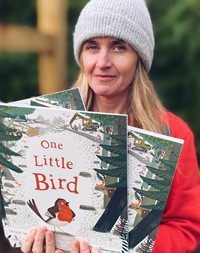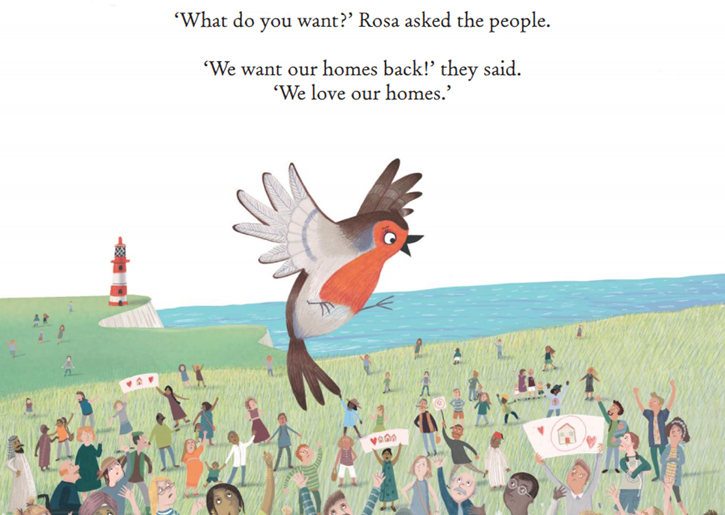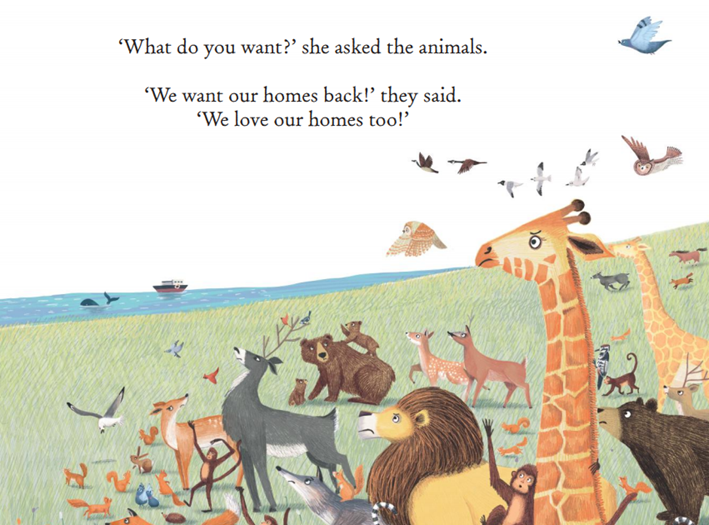Sheryl Webster and Helen Shoesmith


About Author
Sheryl Webster was born in Liverpool, and studied at Liverpool Hope University. With a degree in English and Psychology, Sheryl worked as a primary school teacher before going on a career break to bring up four children. Somehow she also found time to nurture a passion for writing and published a number of picture books.
Through her teaching and writing Sheryl has a drive for encouraging a love of reading in children. Sheryl's many literary influences include Enid Blyton and Kes Gray, but her greatest influences are her four children, who provide the inspiration and ideas for most of her stories. Her work is dynamic, heart-warming and witty.
Helen Shoesmith graduated from Liverpool John Moores University in 2006 with a degree in Graphic Arts and went on to achieve a Masters in Illustration for Children at the North East Wales School of Art and Design in 2008. She lives in Lancashire in the North West of England with her husband and two children.
Interview
One Little Bird (Ivy Kids)
February 2021
One Little Bird, a gorgeous picture book by Sheryl Webster and illustrator Helen Shoesmith, provides a valuable lesson on working together to solve a problem and a wonderful environmental reminder of our role in looking after the planet.
When a man cuts down little Rosa's tree, and her nest with it, she calls on all creatures to remind humans that we all need a home.
Sheryl Webster and Helen Shoesmith tell us more about One Little Bird, and give ideas for how to explore its themes with young children:
1. What is One Little Bird about?
Sheryl: A little bird, Rosa, has her home taken away, and her words/actions subsequently inspire the entire animal kingdom to take a stand against habitat loss.
Helen: It is a heart-warming story about how a tiny robin manages to lead animals near and far to make a stand and teach people the consequences their actions have on the environment and nature.
2. How did the idea for the story start and develop? Why did you want it to focus on the environment?
Sheryl: I wanted the story to have an environmental theme, as nature and caring for the environment is something close to my heart. I feel that introducing children to environmental issues, albeit gently, from a young age, will help to nurture an awareness and interest in our environment, and hopefully a love and appreciation of our wonderful natural world.
I initially thought of Rosa Parks and how she inspired others through standing up for what she believed in. Right away I thought of a robin as the main character. Robins are characteristically known to be adaptable, instinctive, a little bit cheeky, but also fiercely defensive of their territory. So Rosa the robin losing her home and taking a stand seemed the perfect starting point for the story, which could then escalate into her inspiring the rest of the animal kingdom in taking a stand against habitat loss.
I wanted the main character to be small, to show that no matter how big or small your footprint is, you can take steps that will change and inspire others. I also thought it was a fun link to twitter/social media, in regards to how Rosa's tweeting of her message, spread throughout the animals and all over the world.

3: Habitat loss is a big theme to explore in a picture book - was it a difficult text to write?
Sheryl: For me, the initial difficulty, was in thinking how to present something so devastating in a way that children would invest in, whilst also being entertained by. I tried to tackle this through weaving in some humour and comic moments, hopefully providing a good balance of showing the upset and loss that the animals feel at losing their homes, whilst also showing an element of optimism and hope at the same time.
4. Helen, what drew you to the text as an illustrator?
Helen: As soon as I read the text, I immediately fell in love with Rosa. Being a tiny little robin that we see everyday, she is the unlikeliest of heroes. I loved how determined she was to make a difference. There were so many places and animals to research (which I really enjoyed) and while being quite a serious subject, I loved that Sheryl had an element of humour in the story - the lion in the laundry being one of my favourite parts!
5. How did you create the illustrations?
Helen: I began by reading through the text and making notes. I did lots of research and then drew the characters again and again until I was happy with them and felt I could portray them in a variety of poses and moods.
I always like to draw up a plan of the spreads so that I can see which pages will have a double page, which will have a half page spread and which will have vignettes (small illustrations). It helps me to picture how the book might flow.
Once I had a rough idea about each spread, I sketched out small 'thumbnail' roughs so that I could see how to best use the space on the page and how the images might work with the text.
I then played about with different colour palettes that I felt would best complement the story before choosing a couple of thumbnails to draw up in more detail. Once happy with the layouts, I then started to refine and tidy up the illustrations to send to the publisher for their thoughts, before drawing it all up for a final time, ready to go to colour. Once the publisher was happy with the final set of illustrations, I scanned them in and coloured them up using a graphics tablet and Photoshop.
Throughout the process I made tiny 'dummy books' so that I could check the flow of the story and the illustrations. These started out as roughly sketched versions to more finished books towards the end of the project.
This picture book includes pictures of humans and animals. Which do you prefer to illustrate?
Helen: That is a tricky question! Am I allowed to say that I actually love illustrating both? I think it's quite nice to have a mixture and I love that they both present different challenges. I enjoy illustrating people because we have all sorts of interesting features, hair-dos and clothes but then I love illustrating animals too because they are so expressive!
How did you keep the humour in the story, despite the theme?
Helen: Once I began to write about the animals finding homes in other weird and wonderful places, such as the human homes, the humour began to weave in. But I honestly can't take the credit, as it is definitely Helen's wonderful illustrations that draw out the humour to its full potential and put the fun into the story. I feel happy that the story has these comic moments despite the obviously serious and important underlying message.
Do you have a favourite spread?
Sheryl: Oooo, that's a difficult question, as I have so many favourites. I love the spreads in which the animals are in the bath tubs, laundry baskets and loos....BUT...I think my absolute favourite has to be the final spread in which Rosa is snuggled safely back in a tree, and the man who initially cut her home down can be spotted in the background putting up homes and food for the birds and squirrels in his garden. It's such a positive and happy spread that just leaves you feeling good and shows the changes we can make if we act together!
Helen: I really enjoyed working on the city scene. I loved adding in all the little details and showing the animals moving into our homes and places of work because their habitats had been taken away. I included animals and birds native to North America to show the change of place and the word spreading across the world. I also really loved the spread with the Lion in the laundry. That was great fun to illustrate!
There are a lot of themes here about the environment and working together, but is there one thing you would like young children to take from One Little Bird?
Sheryl: YOU can make a difference, no matter how small.
Helen: Always believe that you can make a difference, never give up!
Can you suggest any activities to do with children after sharing One Little Bird with them?
Sheryl: Anything that gets children outside and involved with nature!
Talking about Rosa's home could lead to exploring other creatures' habitats with bug hunts, bird watching and visits to parks and local green areas.
Thinking up ways of making your outdoor areas wildlife friendly, such as adding bird feeders, making bug hotels and planting seeds that will attract bees and butterflies. And if you don't have a garden - plant seeds in window boxes and hang feeders from windows. It still counts and makes a huge difference!
Look at the different animals in the book and paint animal/insect pebbles. It's a great way to encourage children to notice the many different characteristics/markings that creatures have.
Get involved with environmental organisations. Many often hold events/activities that children can often get involved with, such as the Big Garden Birdwatch, ran by the RSPB, and 30 Days Wild with The Wildlife Trusts.
Play an A-Z animal game. Think of names of animals starting with A and then work through the alphabet. For bonus points try and name each animals habitat as you go along.
Above all else, lets encourage our children to have fun and GO WILD!
Helen: You could create your own little Rosa and hang her up to remind you that anyone can make a difference!
Visit www.helenshoesmith.com/downloads for a free printable download with instructions.
If you're feeling extra creative, you could use a plain piece of paper, follow the instructions and draw and colour in Rosa yourself!
Thank you Helen and Sheryl for joining us on ReadingZone!
 One Little Bird
One Little Bird
